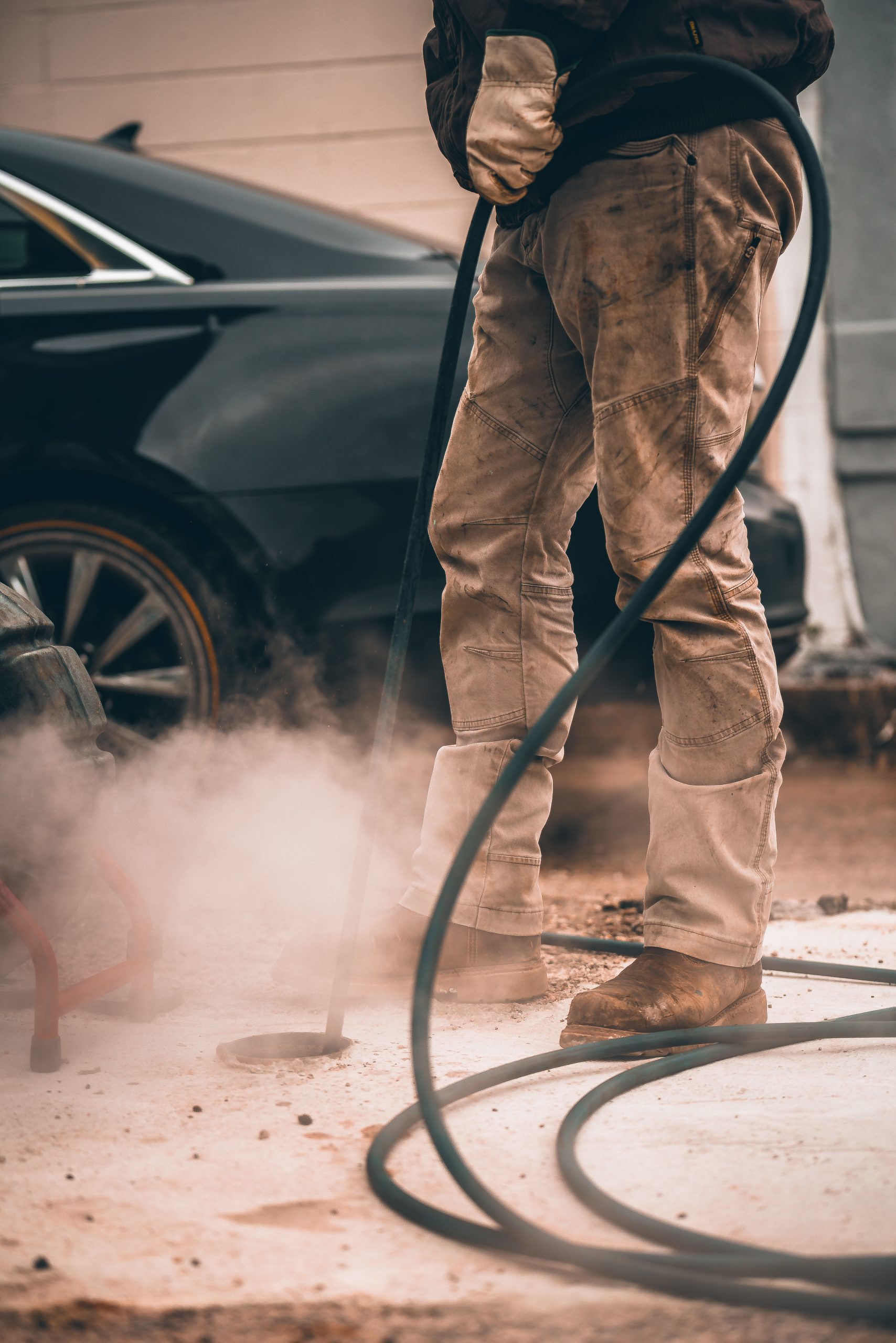Cleaning Up The Mess After A Sewage Backup
Sewage Backup is a problem that one would never want to face. It occurs when an obstacle or sewer line damage prevents the wastewater from draining down from your house, resulting in flooding water.
Furthermore, to perform sewage backup cleanup, start by removing all types of waste and debris from your property so that it can be disposed of properly. This also allows you to make sure that your drains are clear before more waste builds up in them.
It is not a big destruction, but it can lead to many health hazards and sanitation issues, as well as result in major property damage and human injuries.
Therefore, in the event of sewage backup in your house, the sewage backup cleanup must be done immediately. You can do this yourself if you’re familiar with plumbing and have a blueprint of your home, or you can utilize sewage backup cleaning services in your town.
We’ve put together a guide on everything you need to know about preventing, cleaning, and handling a sewage backup in your home!
Note: Sewer Backup Cleaning is a back-breaking and dangerous job. Hence, spectating the backup spill is a good step in handling the situation independently.
What To Do Immediately After A Sewage Backup
Important measures should be taken to prevent the problem from spreading. The first couple of things that you should do immediately after realizing signs of sewage backup are as follows:
- Remove any children, pets, and seniors from the home to prevent emergencies. Do not allow them back indoors until the damage is completely fixed and it is safe;
- Keep yourself safe by putting on any protective clothing such as rubber boots, rubber gloves, eye protection, a face mask, and more;
- If the distribution panel is above water, switch off the electricity by using a dry wooden stick and rubber gloves; Turn off the water in your home, and do not use any water for bathing, drinking, washing hands or dishes, and others. Sewage backup leads to contaminated water, which is hazardous to health;
- You may need to contact utility companies and have them shut off the main water supply to your home if you cannot safely turn them off yourself;
- Open your home’s doors and windows to allow proper air ventilation. You won’t want to use your home’s AC as this will spread contaminated air throughout your home;
- Remove any items from the area that are dry and not contaminated;
- You can add small amounts of chlorine bleach into the standing water to disinfect;
- Contact your insurance company and notify them of the backup. You’ll want to take pictures of any damage the sewage backup caused. This will come in handy as proof when filing your claim;
- Never attempt to unclog the drains. You must clean up the sewage spill before taking any further action.
What Causes A Sewage Backup
The most common cause of a sewage backup is clogged pipes. Another common cause is a septic tank that is not functioning properly or has become weak from years of use and can’t manage the overflow of water anymore. Besides this, some other causes are discussed below.
Clogged Sewer Lines
Some people think that a sewage backup is caused by a clog in the pipes. A clog is not the only reason for a sewage backup. A clog can be caused by grease or a piece of garbage. Disposable wipes are also another reason for clogged drains.
Leak In The Sewer Lines
A more likely cause of a sewage backup is a leak in a pipe. There are a few reasons this can happen, such as a damaged pipe during a construction project. This type of malfunction is not caused by a clog.
Aged Sewer Systems
Sewer pipes are generally made of strong Cast Iron, PVC, or Clay Piping. Just like humans, sewer pipes get old. Aging sewer systems can become damaged over time, which can cause sewer backup problems. Trenchless pipe repair can solve most of the common problems with sewers, but in some situations, installing new sewer pipes can be a lifesaver for the sewer systems and can prevent sewage backup Issues.
Tree Root In The Sewer Lines
Tree roots in the sewer lines are another casual reason for a sewer backup. Tree roots can enter through sewer line cracks and damage the pipes, causing sewage backup problems. You can prevent tree roots from getting inside the sewer system by installing new plastic pipes in place of the old and leaking ones.
How To Handle A Sewage Backup
There are vital things to remember when handling a sewage spill in your home. Remembering these treatments will help keep your home and family safe, prevent further damage, and ensure your insurance company has all the documents they need.
- Along with providing your pictures, the insurance company will also want you to provide receipts of any work that had to be done due to the backup, any materials brought to aid in the cleanup and fixing of your home, and any returned items that were damaged.
- Keep the infected area as far away from the rest of the home as possible. This includes shutting all doors that attach to the infected area. By keeping the doors shut, there is a less likely chance of contaminated air spreading into the other rooms.
- Do not use harsh chemicals to fix the problem in your pipes. This can cause great damage. Instead, you can hire Fischer Plumbing to prevent further damage. Our professional plumbers know how to clean out the pipes properly.
How To Start Cleaning & Sanitizing Sewage Backup
Before beginning to clean up the area without a professional, wear all the proper protective gear. You’ll also want to consider the risks of starting the cleanup independently. It’s always best to call the professionals to ensure the job is done correctly.
Here Are Some Ways You Can Begin Cleaning Up The Mess
- Wear Protection Gloves – Rubber gloves will prevent direct contact with the contaminated water.
- Drain Sewage Backup Water – Drain the Water using natural draining or a pump to remove any backed-up water and sewage. You’ll need to contact the authorities to ask where to drain the sewage properly.
- Remove Clogged Residuals – Remove and clean any dirt, or debris from the surfaces the sewage came into contact with.
- Clean the Walls – Properly wash any walls, floors, and other surfaces the sewage water may have touched. Use a low-suds detergent and clean hot water after you drain all the flooded water.
- Use Warm Water – Rinse these surfaces with warm water after cleaning.
- Do Sanitization – Sanitize all surfaces with a sanitizing solution. And be sure not to contaminate other rooms by walking into them with dirty shoes.
- Let The Bad Odor Out – Open any windows and doors leading outside to air out the room.
- Check the Electrical Appliances – If your gas and electrical appliances got in contact with the wastewater then it will be better to get them professionally checked and repaired if required.
How To Prevent A Sewage Backup
If you’ve experienced a sewage backup in your home, you understand the importance of taking all appropriate measures to prevent it from happening again.
In contrast, if you’ve never experienced a sewage backup in your home, trust us when we say that you’ll be happy you took the time to read through the steps to prevent it.
Here Are Some Steps You Can Take To Prevent A Sewage Backup
- Have a regular inspection done on all pipes and valves in your home and on your property. Make sure they’re in good condition and receive any needed repairs.
- Don’t spill large amounts of chemical products down into the sewage system.
- Don’t flush anything other than toilet paper down the toilets.
- Don’t allow grease to go down the kitchen drain as it may harden in the pipes.
- Avoid planting trees near the pipes as their roots may cause the pipes to break.
When To Call The Professionals
If you are not able to clean up the sewage backup in your house, calling a professional sewage backup cleanup services company is the best thing you can do; it gets necessary if:
- The spill has spread to the whole house;
- It has been more than 24 hours since the sewage backup occurred. Until that time the wastewater will get contaminated with bacteria and viruses that can cause severe threats to your health;
- The backup is caused by a septic tank;
- Somehow your electrical appliances get in contact with the sewer water. Calling a duct repair professional to check the appliances will be crucial;
- You or someone in your family got impacted by the contaminated water.
On a serious note, you should get the backup water cleaned immediately. The longer it stays in your house, the more your health will be at risk.
Sewage Backup Cleaning Costs
While you were dealing with the sewage backup, you may also be wondering what the average cost of cleaning it will be.
The average sewer backup cleanup costs about $7 per square foot, excluding other factors that can impact the overall cost.
The cost can rise depending on the area of sewage, the size of the area impacted, how long the spill sits, property damage and restoration, and the material harmed due to the sewage backup.

Call The Professionals
Call Fischer Plumbing Right Away And Get The Best Sewer Line Repair Service At Your Doorstep.
FREQUENTLY ASKED QUESTIONS
Sewage backup in the basement is usually due to a basement wall or floor failure. So, the best way to clean up sewage backup is to locate where the water is coming from. After that, pump out water and your sewage backup repair.
Honestly, a sewer line backup makes a lot of mess. Sometimes, it can be an expensive problem, though. To start sewage backup cleanup, first you need to check for clogs, grease, or soap scum in bathtub drainage specifically. If you locate any issue, use a plunger to clear the clog or call a plumber if the plunger doesn’t work.
Sewage can contain many types of bacteria, viruses, and other pathogens. Most are harmless to humans, but not all. Moreover, this contamination can cause headaches and fatigue, nausea, and vomiting, vomiting blood (hematemesis), intestinal and other infections.
The simplest way for the removal of dried sewage is to use a granular cleaner product. It contains antimicrobial that will break down the raw material into a more manageable size, so it can be disposed of in a more effective manner. You can also install a filtration system that can remove the solid particles in the dried sewage.
Depending on the type and amount of bacteria present in soil (as well as other factors), it can take anywhere from 2 to 3 months to more than a year for enteric bacteria levels to drop significantly.









